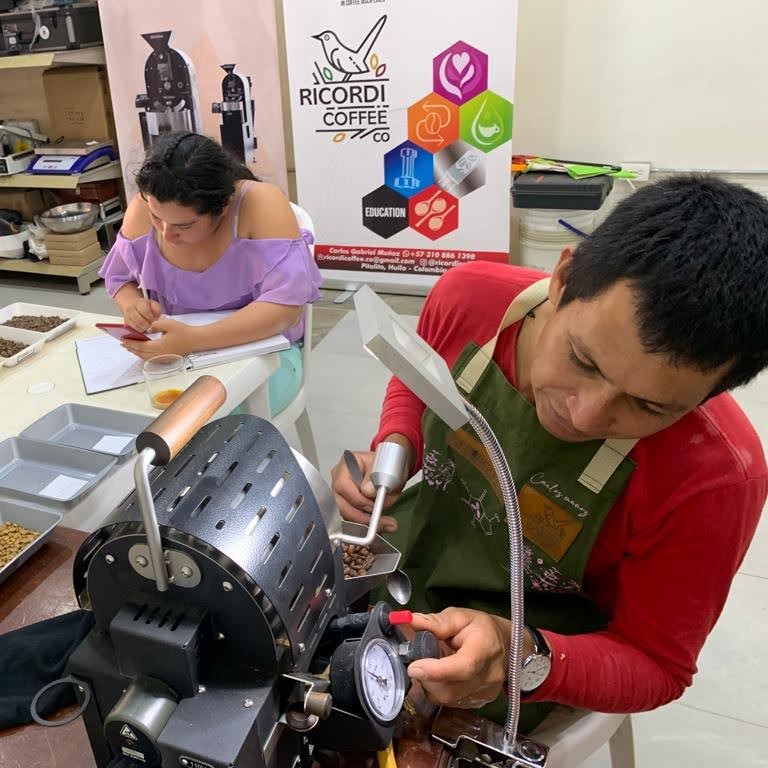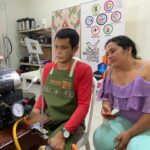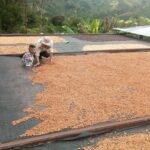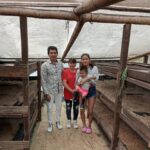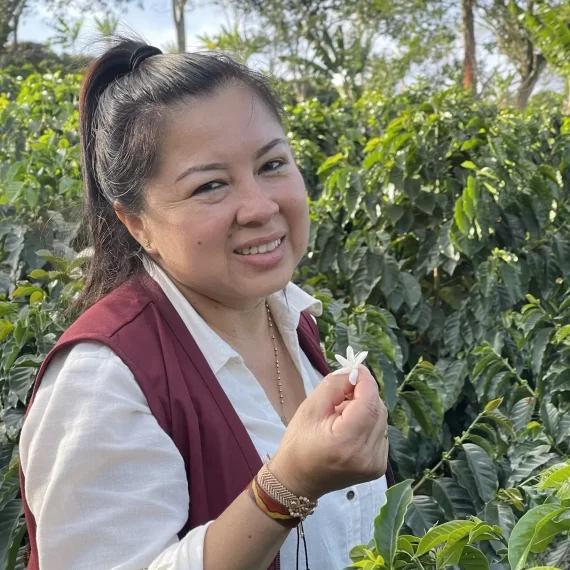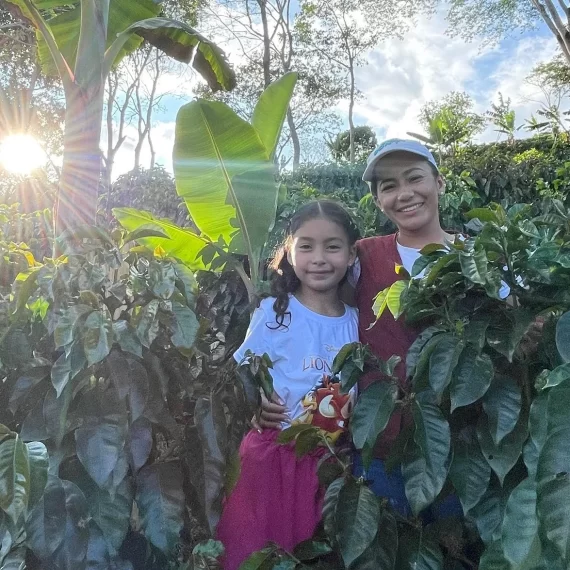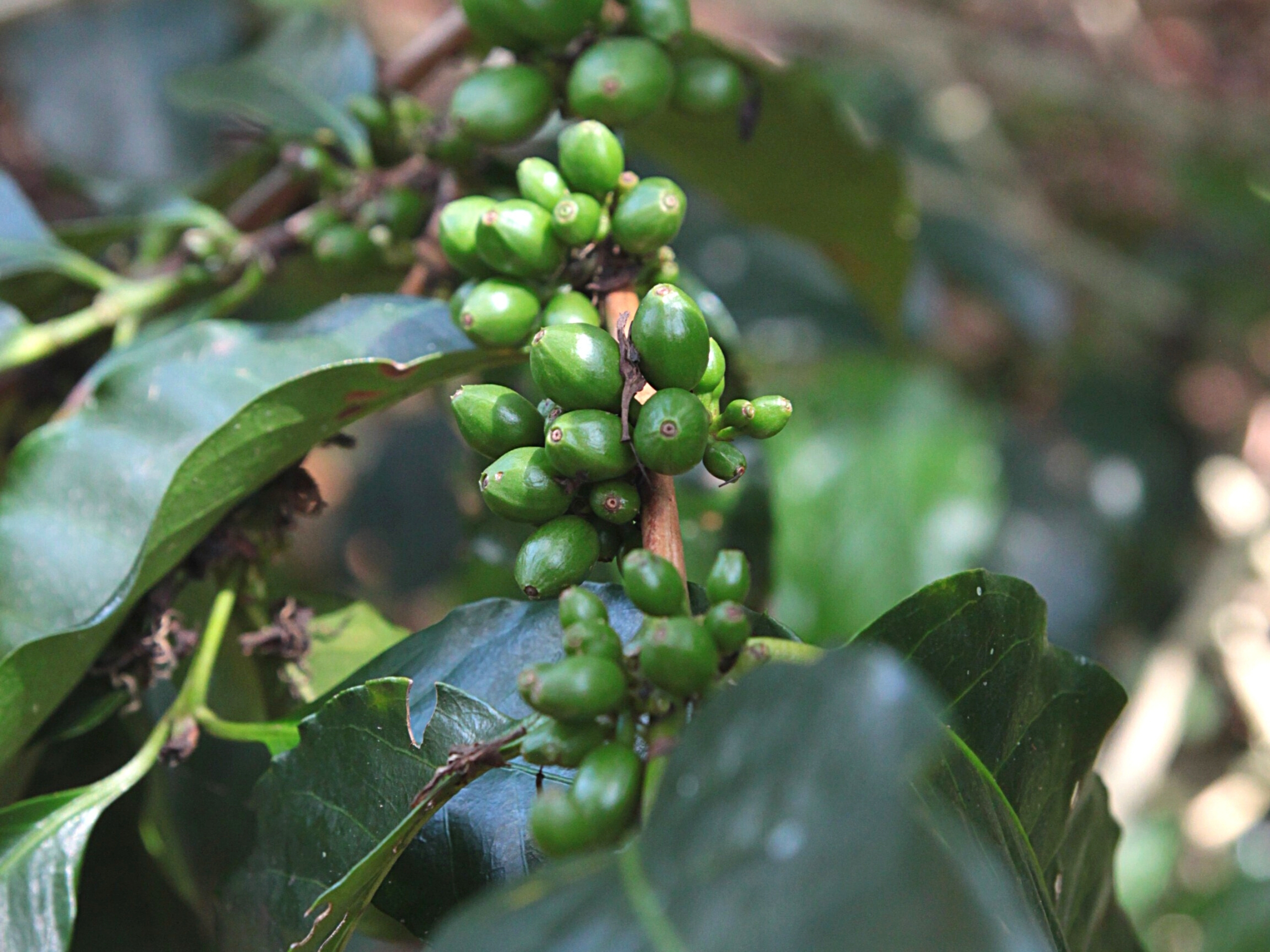
Hugo Gualaco
Hugo is a 43 year old farmer who manages the La Vega farm in the Huila region of San Adolfo with his wife and two children. The Guatalcos have been working with coffee all their lives, and have been working with the choice coffee for the last 8 years. Hugo continues his education, attending the coffee lab in the district town of Pitalíto, where he learns how to evaluate coffee properly. He is trying to improve not only his farming skills, but also his barista, roaster and cupping skills. He then applies his newly acquired knowledge back to coffee growing.
Hugo’s goal is to support his family solely through coffee harvests. Beyond that, he needs to do things with heart, and that’s more than possible in specialty coffee.
His grandfather and mother served as life examples for him. He inherited the profession of coffee farming from them, seeing it every day during his childhood. From an early age, Hugo’s family instilled in him the importance of improving and pursuing this craft with passion.
Hugo studied until the 7th grade in Ibagué, a medium-sized town in Colombia, but eventually realized that it wasn’t what he enjoyed. He returned to his grandparents, where he began to immerse himself in the world of coffee thanks to his uncle. This was in the coffee-growing region of Huila, where he settled. He started working as a laborer on his uncle’s and grandfather’s farm. Later, his grandfather gave him 1,000 small coffee plants to plant and care for. Gradually, the farm grew, and when Hugo met his life partner at the age of 20, they decided to find a larger farm that would be theirs alone.
They found a farm where practically nothing was growing, so they began planting coffee trees on a large scale. Initially, they planted the Caturra variety and gradually expanded the farm to include other varieties.
About the farm
Twenty years ago, we acquired a farm where we started growing the Caturra variety. In 2012, the coffee plants were heavily affected by coffee leaf rust, and we were forced to look for another variety that would be more resistant to this disease. One alternative was Bourbon Rosado. However, when I realized that Caturra was gradually disappearing from the coffee world, I decided to preserve a portion of it, ensure this small lot survived, and isolate it from the other coffee plants.
My coffee is exceptional because we have ideal climatic conditions, highly fertile soil, and new varieties. When I started working in the sensory field, I realized the great potential in the varieties I work with. I love that every time I evaluate and taste the different processes in my coffees, I uncover amazing flavors and profiles.
Gradually, I started educating myself more and more about coffee. It brings me great joy to know where my coffee is going, to connect with roasteries, and to feel that our hard work has literally fallen onto fertile ground.
About the coffee
The coffee on the farm is processed with great care. First, it is harvested by hand and then manually sorted and screened in water, removing any floaters.
Next, the coffee is fermented in a tank near the wet mill, typically for 12 hours or longer, or sometimes in plastic containers. Finally, Hugo decides whether to process the coffee using the washed method, extend the fermentation period, dry the coffee without cleaning it, or apply a combination of these processes.
The lot was harvested in mid-June in two phases. On the farm, the cherries are hand-sorted and undergo a “floating” process. No fermentation occurs; after floating is completed, the pulp is removed. The coffee is placed into a plastic tub with holes at the bottom and quickly rinsed. Once removed, it is transferred to pre-cleaned blue barrels, which are rinsed with hot water. Anaerobic fermentation then takes place in the barrels for 80 hours. The duration depends on the ripeness of the cherries; the riper the cherries, the shorter the fermentation.
Data such as pH levels between 4.0 and 4.3, temperature fluctuating between 10 and 23 degrees Celsius, and pressure between 50 and 100 mbar are recorded, with adjustments made using a degassing valve to maintain this pressure range.
Samples of the mucilage layer are taken, and the pH is measured. If it falls within the desired range, the container is opened, and the coffee is removed. The coffee is washed with cold water, allowed to drain for approximately 1 hour, and then moved to the drying process. This process is always carried out in the morning. Drying takes place in the sun on african beds for approximately 20 days. After drying, the coffee is packed into bags and stored.
The lot was harvested in mid-June in two phases. On the farm, the cherries are hand-sorted and undergo a “floating” process. No fermentation occurs; after floating is completed, the pulp is removed. The coffee is placed into a plastic tub with holes at the bottom and quickly rinsed. Once removed, it is transferred to pre-cleaned blue barrels, which are rinsed with hot water. Anaerobic fermentation then takes place in the barrels for 80 hours. The duration depends on the ripeness of the cherries; the riper the cherries, the shorter the fermentation.
Data such as pH levels between 4.0 and 4.3, temperature fluctuating between 10 and 23 degrees Celsius, and pressure between 50 and 100 mbar are recorded, with adjustments made using a degassing valve to maintain this pressure range.
Samples of the mucilage layer are taken, and the pH is measured. If it falls within the desired range, the container is opened, and the coffee is removed. The coffee is washed with cold water, allowed to drain for approximately 1 hour, and then moved to the drying process. This process is always carried out in the morning. Drying takes place in the sun on african beds for approximately 20 days. After drying, the coffee is packed into bags and stored.
Harvesting and hand selection of the coffee cherries was carried out with an emphasis on quality. The cherries were quickly washed in mesh bags (a synthetic material with large holes, commonly used for packing potatoes) to remove dirt and impurities.
The coffee beans were not fermented in cherries, but were immediately de-pulped and fermented in the pulp for 36 hours in the bags. The coffee was then washed twice and dried under a screen and plastic cover.


